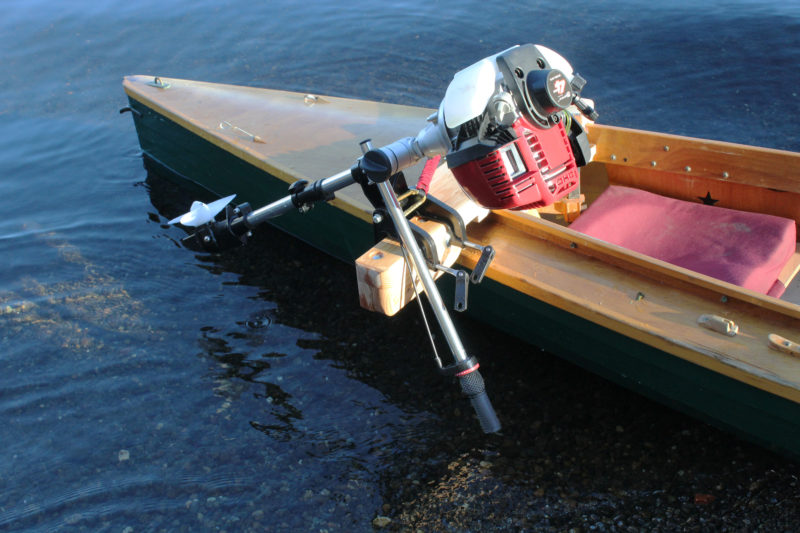 photographs by the author
photographs by the authorThe light weight of the four-stroke Aqua Bug (shown here) and its two-stroke cousin are both light enough to be side mounted on a canoe without overwhelming its stability.
My 2.5-hp four-stroke Yamaha outboard, the smallest in the Yamaha line, weighs 40 lbs, so I’d never imagined putting it on my lapstrake canoe. The canoe doesn’t have a transom, so I’d need to mount the motor on the side, and hanging 40 lbs out there was out of the question. When Bike Bug, maker of compact gas motors that can be added to bicycles, emailed me about their Aqua Bug two-stroke and four-stroke outboards, I had a chance to see what it would be like to have a power canoe.
Bike Bug claims the Aqua Bugs are the “world’s smallest” and indeed both of them are very easy to carry with one hand. The four-stroke weighs 17 ½ lbs with a tank one-third full and its crankcase filled with oil; the two-stroke weighs just 11 ½ lbs with a half tank of gas.
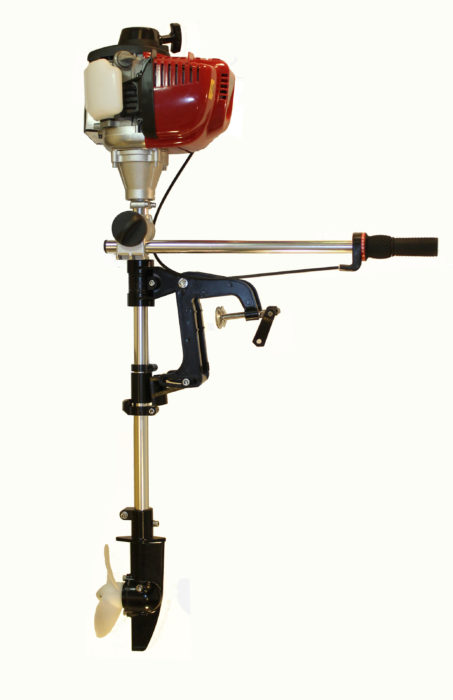
The four-stroke Aqua Bug
The four-stroke looks like a very skinny outboard. The parts are all attached to a chrome-plated 1-1/8″ pipe, but there’s a normal-looking 7″ three-bladed plastic prop, lower unit, and mounting bracket under the 1.4-hp motor. The two-stroke has an unusual look for an outboard. The motor, rated at 1.2 hp, looks as though it was pinched from a gas-powered weed-whacker, the 1″ aluminum shaft is bent, the lower unit looks like it was made out of an electrical conduit junction, and the prop looks like high-performance surface-piercing propeller sized for blending smoothies. But if that’s what it takes to make an outboard that weighs around 11 lbs, I didn’t mind. I cobbled together a motor mount for my canoe and headed out for trials on Seattle’s Lake Union.
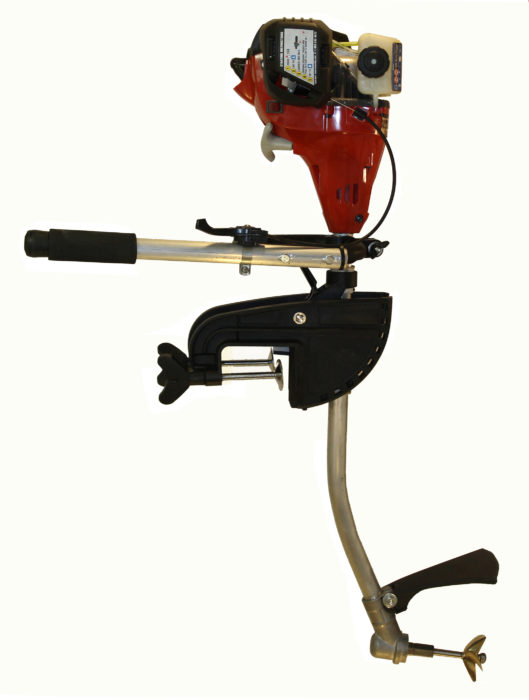
The two-stroke Aqua Bug
Both motors have little fuel pumps to get the flow of gas going, chokes for cold starts, and centrifugal clutches. They both started up quickly, with two or three pulls of the starter cord. The two-stroke’s prop didn’t turn until I revved the motor to engage the clutch. The four-stroke was running too fast at an idle, so I backed the screw on the motor to adjust the low-end RPMs. A zip tie added to hold the cable to the tiller kept it in a position that reduced friction to assure the throttle returned quickly to an idle. Both engines are air cooled, so I could practice starting them and do any tuning without having the lower units in a bucket of water. There are kill switches on both motors, but neither has a deadman function.
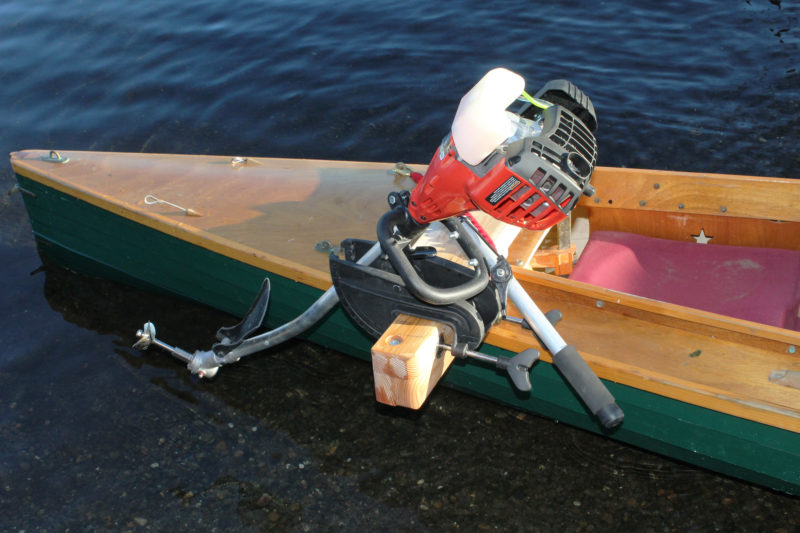
The two-stroke (shown here with the propeller guard angled away from the prop for clarity) has a small propeller that comes into its own once the boat gets moving.
During my trials with the canoe I discovered the motors have very different characteristics. The two-stroke’s prop didn’t provide much thrust until the boat got underway. It seemed to need some forward motion before it could apply power. Cranking the throttle up quickly didn’t do much when the canoe was at a standstill, but once it got going, the prop engaged and the speed came on. Occasionally while running the two-stroke at full throttle, I could hear the engine revs pick up and I felt the speed drop slightly. That might have been caused by air traveling down the shaft and getting sucked into the prop. The hesitation would last for a moment and the prop would take hold again.
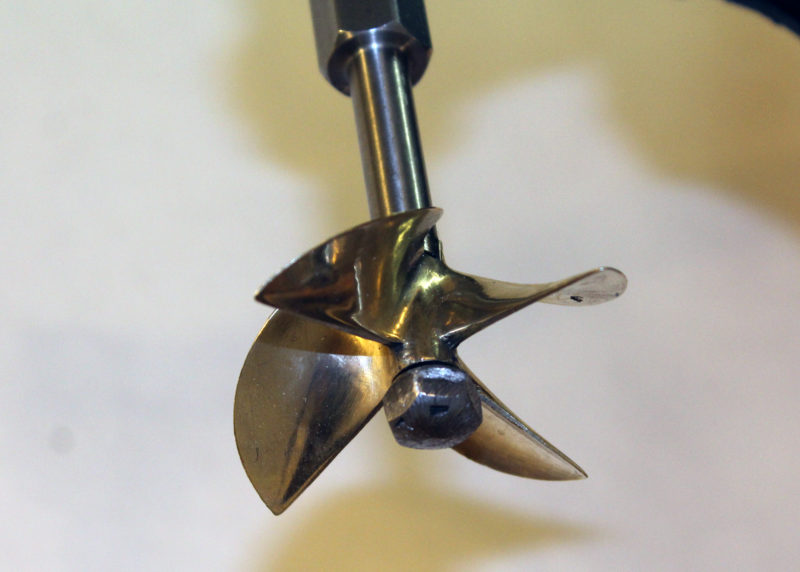
The propeller for the two-stroke has a diameter of 2-5/8″
With two passengers and me in the canoe, all 200-pounders, half throttle pushed us along at 3.5 knots and full throttle got us up to 4.1 knots. The top-end speed came with lot of noise. The exhaust port is on the top of the motor and less than a yard from my ear, so some sort of hearing protection would have been in order.
Turning with the two-stroke needs to be done gradually. If I turned the tiller 90 degrees quickly, it would have little effect on the canoe’s course. Turning more gingerly keeps water flowing into the prop so it can continue to provide thrust through a turn.
The mount for the two-stroke locks at a variety of settings and won’t pivot if an obstruction is hit. The prop seems quite durable, and I’d hope the clutch would slide to prevent any damage.
The cap for the fuel tank is on the side, so to refuel you have to cock the motor up and turn it to get the opening turned upward. The cap has a retainer so it can dangle from the tank while you refuel.
The four-stroke was quite a different experience. It has a lot of thrust at slow speeds and got the canoe moving quickly even with its 600-lb load. It was important to start the engine without the throttle turned up so that the prop didn’t engage as soon as the engine came to life and send us careening forward. The canoe isn’t very stable, and I had to be careful making turns. With the prop providing thrust underneath the canoe, any steering caused the canoe to roll, banking into the turn. A wider boat wouldn’t have felt so twitchy.
Like the two-stroke, the four-stroke can pivot through 360 degrees, so you can get reverse if your boat allows you reach back far enough to hang on to the tiller. The shaft of the four-stroke has a device that allows it to be run in reverse without tilting up. When run forward the motor will pivot up over obstructions, as most outboards do, but the Aqua Bug was so light that the motor would tilt forward if I throttled back and let go of the tiller. And when I pulled the starter cord, I had to hold the top of the engine with the other hand to keep it in place. To refuel you have to tilt the motor first to keep its reverse lock-down from engaging and then rotate the fuel-tank cap upward.
At full throttle, the four-stroke pushed us along at 4.5 knots. The exhaust port of the four-stroke is also at the top of the motor, but it had a lower pitch and a more tolerable volume. Half throttle produced 3.5 knots. As a point of reference, I kicked up the motor and my son and I took to the paddles. We could peak at 5.1 knots, but the speed we could sustain at an exercise pace was 4.4 knots, 3.5 knots at a relaxed all-day pace. In the long haul the motors were was strong as we were.
Like my Yamaha, the Aqua Bug motors have their little quirks to get used to, but they did the job of pushing my heavily loaded canoe along at a good clip. The two-stroke would serve best if you’re looking for the smallest, lightest motor, and simply intend to get from point A to point B without a lot of stops and starts or tight turns. I’d recommend the four-stroke for its cleaner-burning, quieter-running, and all-purpose function. ![]()
Christopher Cunningham is the editor of Small Boats Monthly.
The Aqua Bug outboards are available from Bike Bug. The four-stroke sells for $589; the two-stroke for $389.
Is there a product that might be useful for boatbuilding, cruising or shore-side camping that you’d like us to review? Please email your suggestions.

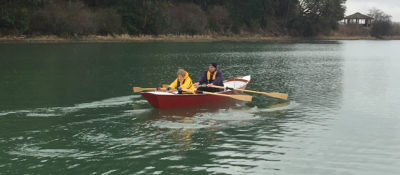
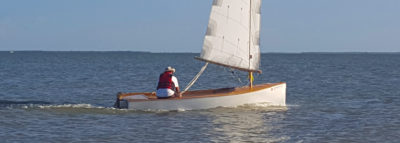
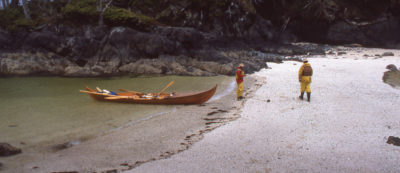
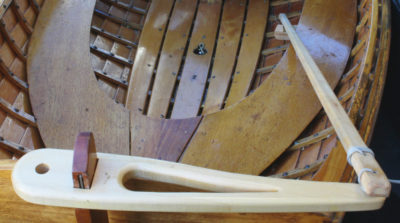
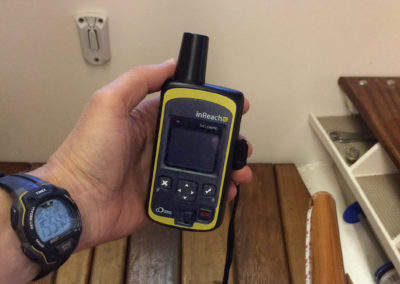
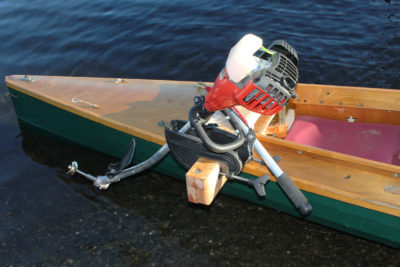
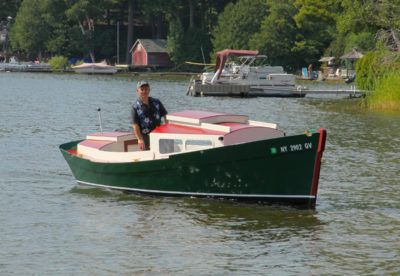
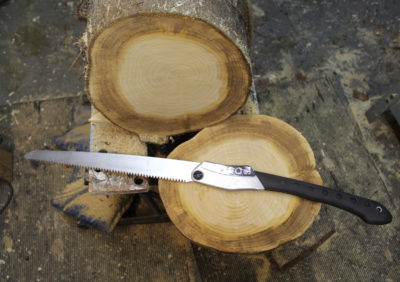

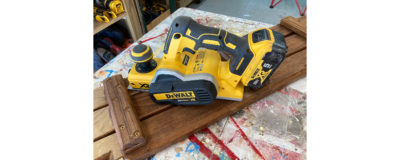
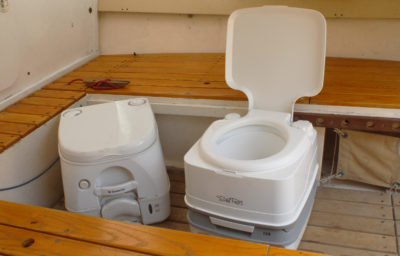
These gas engines pollute and are noisy. Why not use an electric outboard? The new generation of
electric outboards have long range battery power, and have solar charging capability, and are very
affordable. And why would one want a lawn mower engine screaming in your ear while you are canoeing?
Very interesting. Liked the engine snapshot. I think it would be a great idea to do an issue on small motors suitable for small craft, including DIY, projects, small diesels, long-tail motors etc. Great mag. Cheers
Ha ha, the proverbial “egg beater” motor!
Thank you for reporting on this. It’s unfortunate that small and lightweight seems to necessarily mean a lot of noise. It would be interesting to know just how loud these motors are. Sound measuring apps are easily available for smartphones. They’re not calibrated, but would still add a level of objectivity to the report.
I do have a decibel app on my phone so I took readings of both motors. The 4-stroke registered 68 dB at half throttle and 70 dB at full throttle. The 2-stroke registered 72 and 77. The distance from motor to phone was about 30″. The decibel scales I looked at on the web put 70 to 80 dB in the range of a busy street to a vacuum cleaner. That didn’t seem to offer an accurate comparison—the motors seemed louder than that. I haven’t calibrated the app on my phone, so I decided not to present the readings with the review. I should dust off my chainsaw and see if it registers the 110 dB the scales indicate it should be. I’d guess that the 2-stroke Aquabug, the louder of the two, would be a bit under the chainsaw’s reading.
I put a Minnkota EO1 on my Welsford Navigator as an auxilliary motor last summer. It’s awesome. Silent, lightweight and portable. Supposedly it gets 9 hours of motoring at 1/2 throttle on a single charge (2 x 12 volts), but I haven’t put it to the full test. Moves us along at about 4kts at full throttle.
People keep repeating this claim of 9 hours on a single charge without naming what is being charged. The 9-hours claim does not sound right to me. If the motor pulls 30 amps at half throttle, it will use up a Group-27 90 AH deep-cycle battery in 3 hours. At 45 amps the battery will be dry in 2 hours. A Group-27 battery weighs around 55 lbs. You would need 3 batteries plus the motor to go 9 hours at 1/2 throttle. Would someone really do that with a canoe or kayak just to go 3 mph? I can paddle my sea kayak all day long at 3 mph. People might try some really expensive LiPO batteries. Still something is missing from this picture. What am I missing?
One of the joys of being out in a small boat, rowing or sailing, is in the sound.
Loud motors such as these obscure that experience. No thanks.
The Torqeedo 5 hp has been working for me for 3 years now pushing a 3-ton sailboat around the marina, 18′ aluminum canoe up and down lake, along with super quiet power for a Winboat sailboat/RIB. Super electric power, no noise, gas, fumes, CO2.